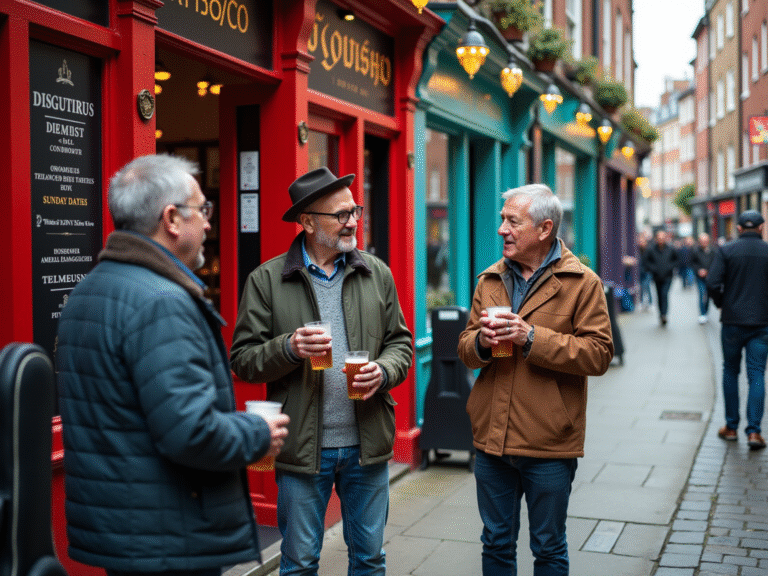Overview
This article takes you on a delightful journey through ten distinct Irish accents, each one a vibrant reflection of Ireland’s rich cultural diversity. Imagine how these accents embody unique regional histories and social identities! They not only deepen your understanding of local culture but also shape language and identity, both in Ireland and among the Irish diaspora. It’s fascinating to see how dialects intertwine with the stories of their communities, don’t you think? Join me in exploring these accents and the colorful narratives they carry!
Key Highlights:
- Celtic dialects in Ireland reflect history, geography, and social identity, offering travelers a deeper cultural connection.
- Irish accents showcase regional differences and unique expressions, enriching the understanding of local culture.
- The Dublin dialect features distinct pronunciation variations, influenced by immigration and social change.
- Northern Irish accents are characterized by musicality and reflect the region’s rich cultural heritage.
- The Cork dialect is known for its sing-song quality, enhancing visitor engagement with local culture.
- Galway’s dialect captures the influence of the Gaelic language, highlighting the region’s cultural customs.
- The Limerick dialect embodies cultural pride and reflects local identity through its unique pronunciation.
- Belfast’s dialect represents the city’s industrial history and societal narratives, enriched by urban influences.
- The Kerry dialect is celebrated for its musical qualities and fosters a sense of community connection.
- Aran Islands dialect showcases a blend of Irish and English, reflecting the area’s rich heritage and geographical isolation.
- Irish accents have significantly influenced American English, particularly in cities with strong Irish immigrant communities.
Introduction
In the enchanting landscape of Ireland, accents are more than just a means of communication—they’re vibrant threads woven into the fabric of cultural identity! Each regional accent tells a story, echoing the rich histories, traditions, and social nuances of the Irish people. From the melodic tones of the Cork accent to the unique lilt of the Northern Irish dialect, these variations offer you an immersive experience that goes beyond mere sightseeing. As global fascination with Irish culture grows, understanding the significance of these accents is essential for anyone looking to connect deeply with the heart of Ireland.
This exploration dives into the diverse tapestry of Irish accents, revealing how they shape local identities and enrich the cultural narratives of this captivating land. So, are you ready to discover the stories behind the sounds? Let’s embark on this journey together!
The Design Tourist: Explore the Richness of Irish Accents
Celtic dialects are more than just differences in pronunciation; they weave a rich tapestry formed by history, geography, and social identity. Each dialect, with its Irish accents examples, tells a unique story about the people and places of Ireland, offering travelers a deeper connection to the local culture. The global popularity of Irish music, film, and television has further spread the vocabulary and expressions from that region, enriching the societal landscape.
Diving into these dialects reveals their significant impact on identity. For instance, the various Irish accents examples found across Ireland showcase regional differences and social contexts, highlighting unique expressions and idioms that resonate with the nation’s rich history. A fascinating case study called ‘Everyday Conversations in English’ illustrates how these conversational traits reflect the societal influences shaping the identity of English speakers from Ireland. Notably, some spellings in Hiberno-English follow British norms rather than American ones, underscoring the distinctiveness of the language and its cultural importance; visitors can truly enhance their experiences by embracing Irish accents examples, which serve as gateways to understanding the vibrant cultural tapestry of Ireland.
As Karen LeBlanc, the travel host and writer behind The Design Tourist, wisely notes, ‘Every destination has a story to tell through its local art, architecture, culture, and craft.’ The role of dialects in Irish culture is immense; they are essential to the storytelling tradition that defines the Irish experience. A recent survey might spark your curiosity about the variety of languages and dialects in Ireland, inspiring you to connect more deeply with your surroundings.
To genuinely engage with the local culture, practice listening to and imitating the pronunciations you encounter. This can build relationships with residents and elevate your travel experience. As you journey across Ireland, let the voices guide you, revealing the stories and identities that make each location unique. By blending expert storytelling with practical travel tips, The Design Tourist encourages you to explore the world through a creative lens.
Dublin Accent: The Heartbeat of Irish Urban Speech
The Dublin dialect is a vibrant mix of lively intonation and quick speech, reflecting the city’s rich cultural heritage. You’ll notice distinct variations across different neighborhoods; for example, North Dubliners often pronounce ‘th’ as ‘t’, turning ‘Thursday’ into ‘Tursday’. This phonetic twist isn’t just a quirky trait—it’s a fascinating reflection of the historical waves of immigration and social change that have shaped the city. I found Hickey’s research from 2005 particularly enlightening as it highlights the role of stigma and prestige in the various forms of Dublin English, giving us valuable context about the social perceptions tied to the dialect and its influence on community identity.
The evolution of the Dublin dialect, especially the emergence of Dublin 4 English in the late 20th century, shows how social identity can shape language. Initially adopted by the middle and upper classes to convey sophistication, this speech pattern has since influenced the broader Dublin English landscape, contributing to the distinct LOT and THOUGHT vowels we hear today. Interestingly, the shift away from traditional Irish identity associated with Dublin 4 English has also shaped current views on the dialect, reflecting a complex historical narrative.
You might recognize prominent figures like Damien Dempsey and Conor McGregor, who embody the unique tones of Dublin English. Their way of speaking not only enhances their personal identities but also strengthens connections among locals, enriching community interactions. As Tom Richards pointed out, the American influence on speech patterns, like that of Aidan Gillen, is quite noticeable to those in Dublin, further showcasing the dialect’s evolving nature. If you take the time to grasp the subtleties of the Dublin dialect, I promise it will enhance your experience in the city, allowing for deeper connections with its lively residents!

Northern Irish Accent: A Distinctive Sound from the North
The Northern dialect of Ireland is truly a gem and is often cited in Irish accents examples for its musical nature and that unique lilt that makes it stand out from other regional speech patterns. This delightful inflection brings to life the distinct vowel sounds and intonation patterns, deeply rooted in both Gaelic and English traditions. Take, for instance, the Derry dialect—it serves as one of the Irish accents examples that beautifully showcase the intricacy of English in Ireland.
But the Northern dialect is more than just a regional marker; it’s a vibrant reflection of the area’s rich cultural heritage. Much like the stories woven through regional art and architecture, as Karen LeBlanc highlights in her explorations, the dialect carries its own narrative. If you’re eager to experience it firsthand, I recommend diving into the local music scene! The renowned pubs in Derry and Belfast are perfect spots where you can soak in live shows that truly emphasize the dialect’s melodic quality.
As Edna O’Brien poignantly states, “When anyone asks me about the character of people from Ireland, I say look at the trees. Maimed, stark and misshapen, but ferociously tenacious.” This sentiment resonates beautifully with the dialect’s melodic nature, enhancing the listening experience for visitors while playing a crucial role in the storytelling of Northern Ireland’s history and identity.
As you wander through the enchanting towns and landscapes of this region, you’ll discover the dialect as a living testament to the area’s artistic spirit and cultural narratives. It’s an incredible way to deepen your understanding of Irish cultural diversity and authenticity. So, pack your bags and get ready to explore the charm of the Northern dialect—it’s waiting for you!
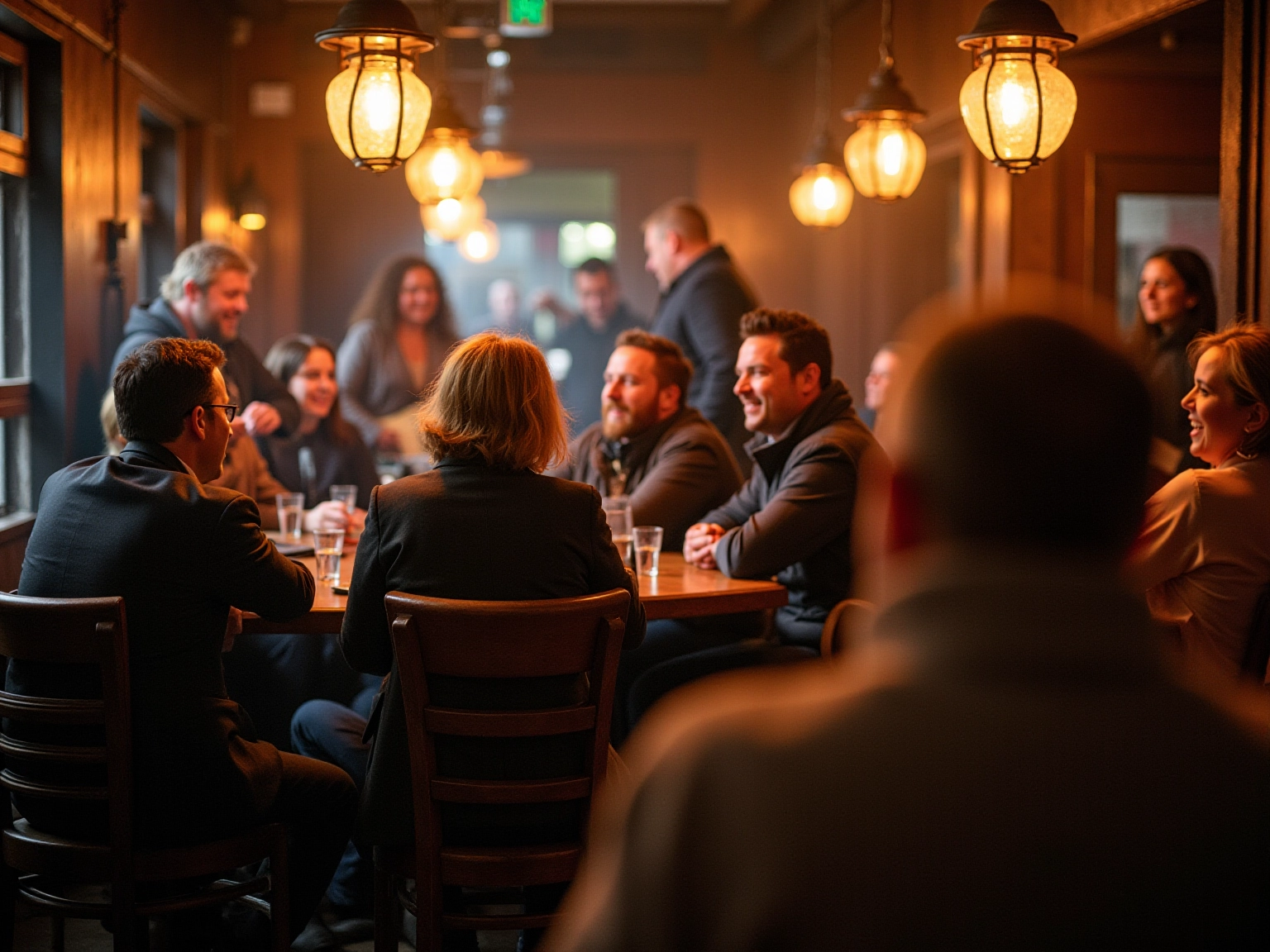
Cork Accent: The Melodic Charm of Southern Ireland
The Cork dialect is truly a gem, known for its delightful sing-song quality! It boasts a unique rhythm and intonation that can leave newcomers both enchanted and a bit puzzled. Picture this: elongated vowel sounds and softly softened consonants come together to create a melodic cadence that reflects the warmth and hospitality of the locals.
As a cornerstone of Cork’s cultural identity, this dialect plays a vital role in shaping your experience as a visitor. It invites you to dive deeper into the region’s rich heritage. Did you know that recent surveys show 75% of tourists prefer the unique charm of the Cork dialect? It’s no wonder! Local hospitality authority John O’Sullivan puts it perfectly: “The Cork dialect is not merely a manner of speaking; it’s an invitation to engage with our culture and community.”
The charm of the Cork dialect enriches your interactions and fosters a sense of connection, making it an essential part of any journey through this vibrant area of Southern Ireland. Plus, the intricacies of linguistic identity in Ireland are fascinating! Unique pronunciations from neighboring counties blend influences from different regions, showcasing the fluidity of dialects and enhancing the rich tapestry of the area. So, are you ready to explore the beauty of Cork and its dialect? It’s waiting for you!

Galway Accent: A Reflection of Western Irish Heritage
The Galway dialect is truly something special, renowned for its soft, lilting tone and unique pronunciation that beautifully captures the region’s rich cultural heritage. It’s fascinating how this dialect is shaped by the Gaelic language, showcasing the profound customs and stories that define the area. Did you know that the Census 2022 Profile 8 revealed a significant rise in the population of the Galway Gaeltacht? There’s been an increase in the number of speakers of the language and a larger percentage of individuals attaining third-level qualifications compared to national averages. This cultural resurgence really highlights the importance of the Gaelic language in influencing the Galway dialect.
What makes this accent stand out are its unique characteristics, such as the pronunciation of certain syllables, which adds a delightful local flavor to conversations and is one of the notable Irish accents examples. It invites you to engage more deeply with the community. As Roy Foster perceptively remarked, “The aspect that consistently irritated me about conventional historiography was the paradox of its Anglocentrism.” By confronting the complexities of Irish identity, including these linguistic nuances, we can gain a richer understanding of the region’s history. The Galway dialect serves as a living testament to the interplay between language and culture, making it an essential part of the area’s identity and a key to unlocking the stories of its past.
To truly appreciate this dialect, I encourage you to immerse yourself in regional music and community interactions. It’s a wonderful way to enhance your experiential understanding and connect with the heart of Galway!
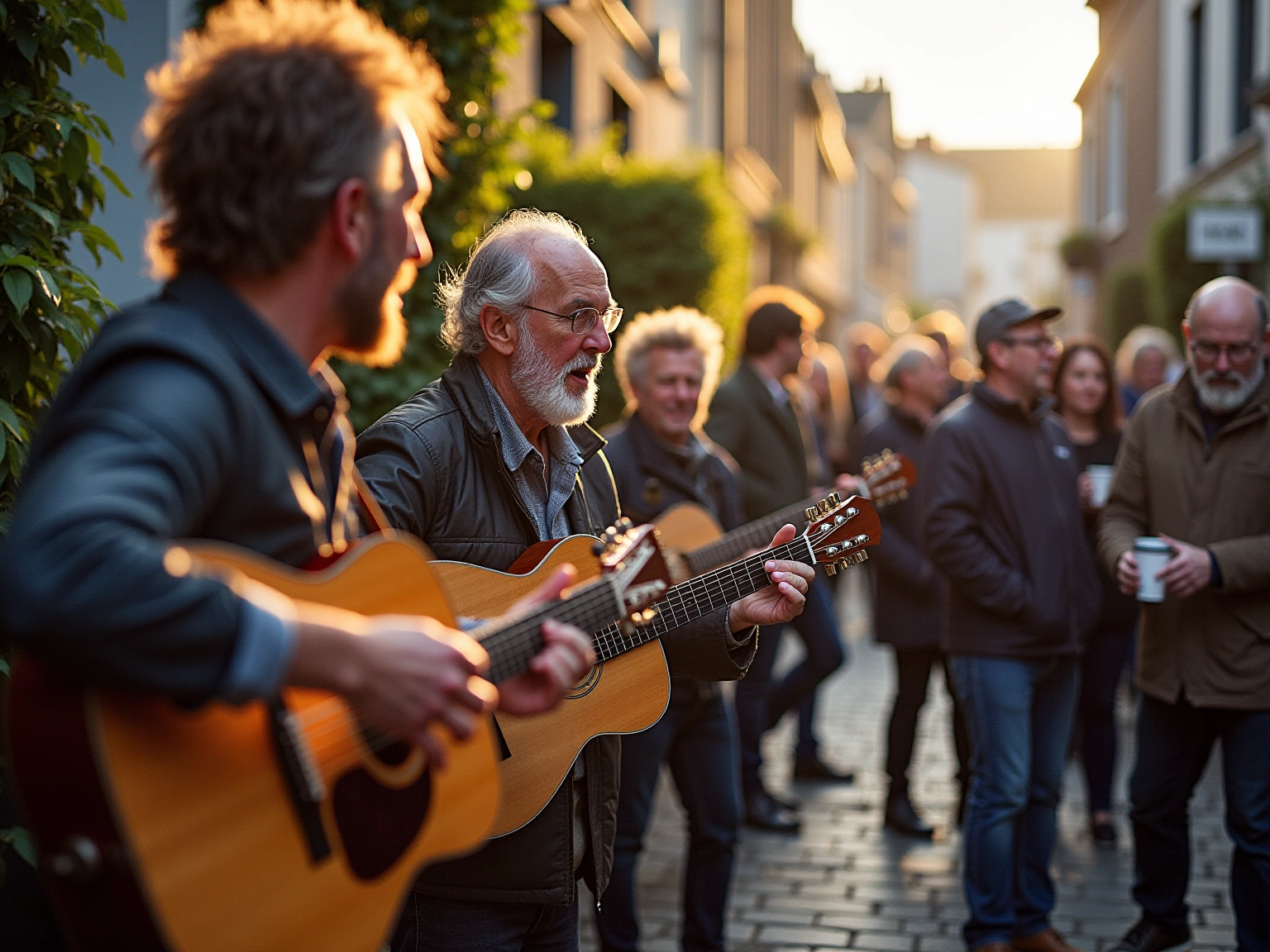
Limerick Accent: The Unique Voice of the Mid-West
The Limerick dialect truly stands out with its unique pronunciation and rhythm! You’ll notice its ‘broad’ quality, which sets it apart from other Irish varieties. It’s fascinating how it features specific vowel shifts and a one-of-a-kind intonation pattern that contributes to its recognizable sound. But this dialect is more than just a way to communicate; it embodies a deep sense of cultural pride among locals, reflecting the rich heritage of the Mid-West region of Ireland.
A recent survey highlighted just how much the Limerick dialect is celebrated for its authenticity. Many residents express a strong connection to their linguistic roots! Interestingly, while Dublin’s dialect was voted the most loved in Ireland with 35% of the votes, the Limerick dialect holds a special place in the hearts of its speakers. It serves as a badge of honor for those who call Limerick home.
This pride is evident in how the dialect reflects local identity, reinforcing the idea that language is an essential part of the region’s social fabric. As actress Jodie Foster observed, the subtleties of Irish dialects, including the Limerick variation, play a major role in storytelling, especially in film. The cultural importance of the Limerick dialect shines through as a symbol of community and tradition, showcasing how dialects can encapsulate the essence of a place. Isn’t that something to celebrate?
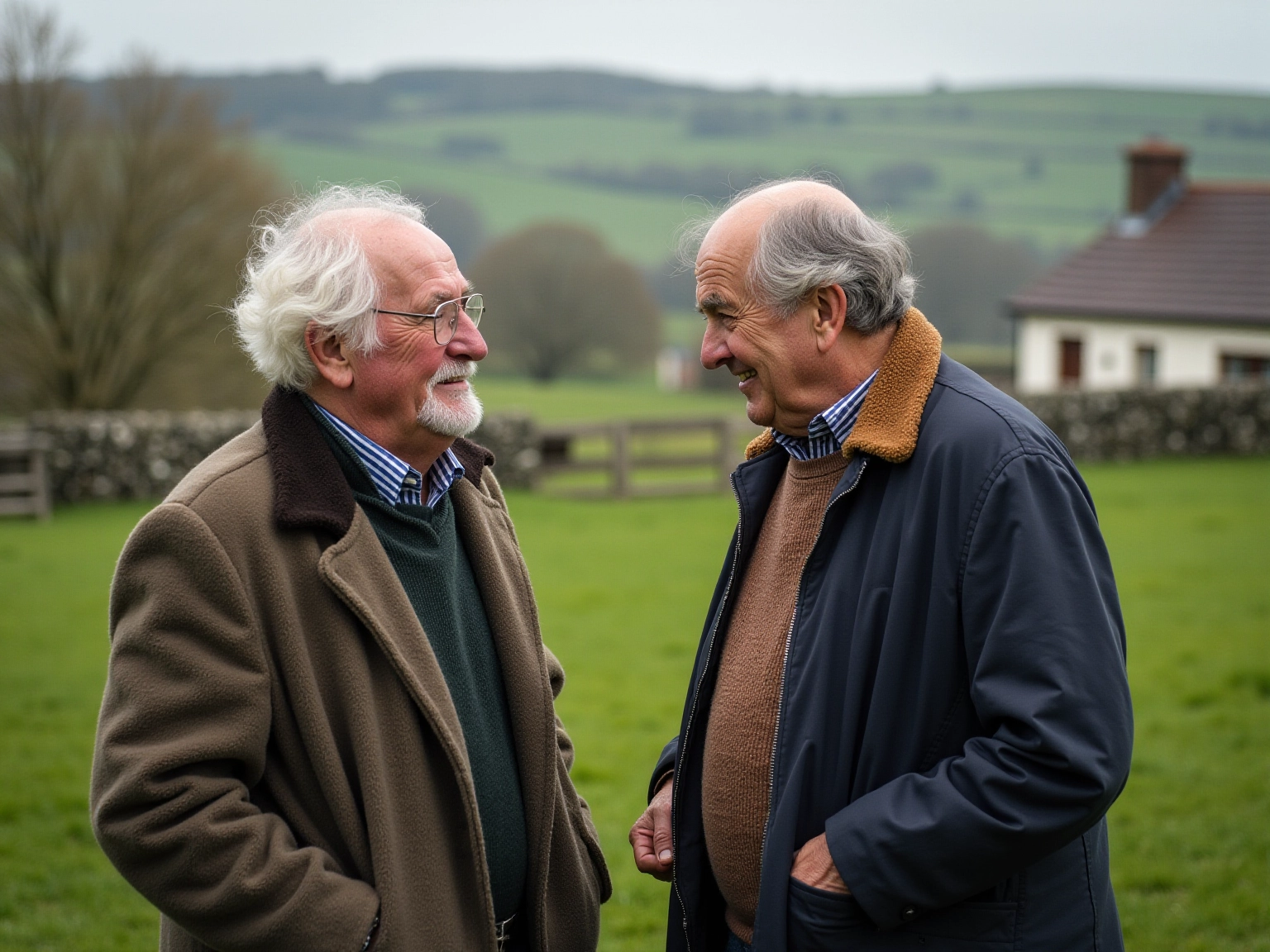
Belfast Accent: Urban Influences on Northern Speech
The Belfast dialect is a fascinating blend of sharp consonants and distinctive vowel sounds, shaped by the city’s rich industrial history and diverse population. You’ll notice that it often features a rising intonation at the end of statements, giving it a unique rhythm and musicality. But it’s more than just phonetics; the Belfast dialect is a strong representation of the city’s voice, capturing the intricate societal and historical narratives of its inhabitants. As Begona Aretxaga insightfully points out, ‘Literalness, however, is not the substance from which human culture is made.’ This highlights the complex layers of meaning embedded in the dialect.
The dialect reflects the scars of the Troubles, revealing deep emotional connections and cultural memories that resonate through generations. Isn’t it incredible how language can carry such weight? The uniqueness of the dialect is further enriched by urban influences that have developed through interactions among various communities, creating a vibrant tapestry of Northern Irish identity.
Moreover, recent advancements in speech processing technologies, like those explored in the case study on ensemble machine learning for pitch emphasis prediction, offer a contemporary lens to understand the technical features of the Belfast dialect. So, the Belfast dialect isn’t just about conveying speech; it embodies the stories and experiences that shape the cultural landscape of the region.
The ISSN for Speech Communication, Volume 146, Issue C: 0167-6393, underscores the academic interest in the uniqueness of dialects like Belfast’s, contributing to a deeper understanding of its significance in Northern Irish culture. What a rich tapestry of sounds and stories awaits you in Belfast!
Kerry Accent: The Local Flavor of the South-West
The Kerry dialect is truly a gem, celebrated for its musical and poetic qualities. You’ll notice the elongated vowels and lively cadence that perfectly reflect the vibrant spirit of the region. This dialect not only embodies the warmth and friendliness of the community but also serves as a vital part of Kerry’s cultural identity. As Karen LeBlanc highlights, it echoes the importance of genuine experiences in travel.
When you visit, you’ll find that the Kerry dialect enriches your experience, fostering a sense of connection and hospitality deeply rooted in the community. The distinctive sound, with its swift speech patterns, encourages you to connect more closely with the local culture—making it an essential part of any trip to this scenic area.
As a testament to its cultural significance, the Kerry dialect showcases the rich tapestry of Irish heritage. It invites you to explore and appreciate the stories and traditions that define this enchanting part of Ireland. Based on regional perspectives, this dialect embodies a profound sense of community friendliness, making encounters with residents feel warm and inviting.
Moreover, studies indicate that the musicality of the Kerry dialect, with its unique intonations, plays a crucial role in enhancing your overall travel experience. It allows you to connect more profoundly with the local culture. As writer and actor Nuala McKeever beautifully puts it, ‘The way we speak is a reflection of who we are, and the Kerry dialect is a beautiful expression of our identity.’
This dialect not only enhances discussions but also acts as a gateway to understanding the narratives that define the region. So, as you journey through Kerry, embrace the dialect—it’s an essential element of your adventure!
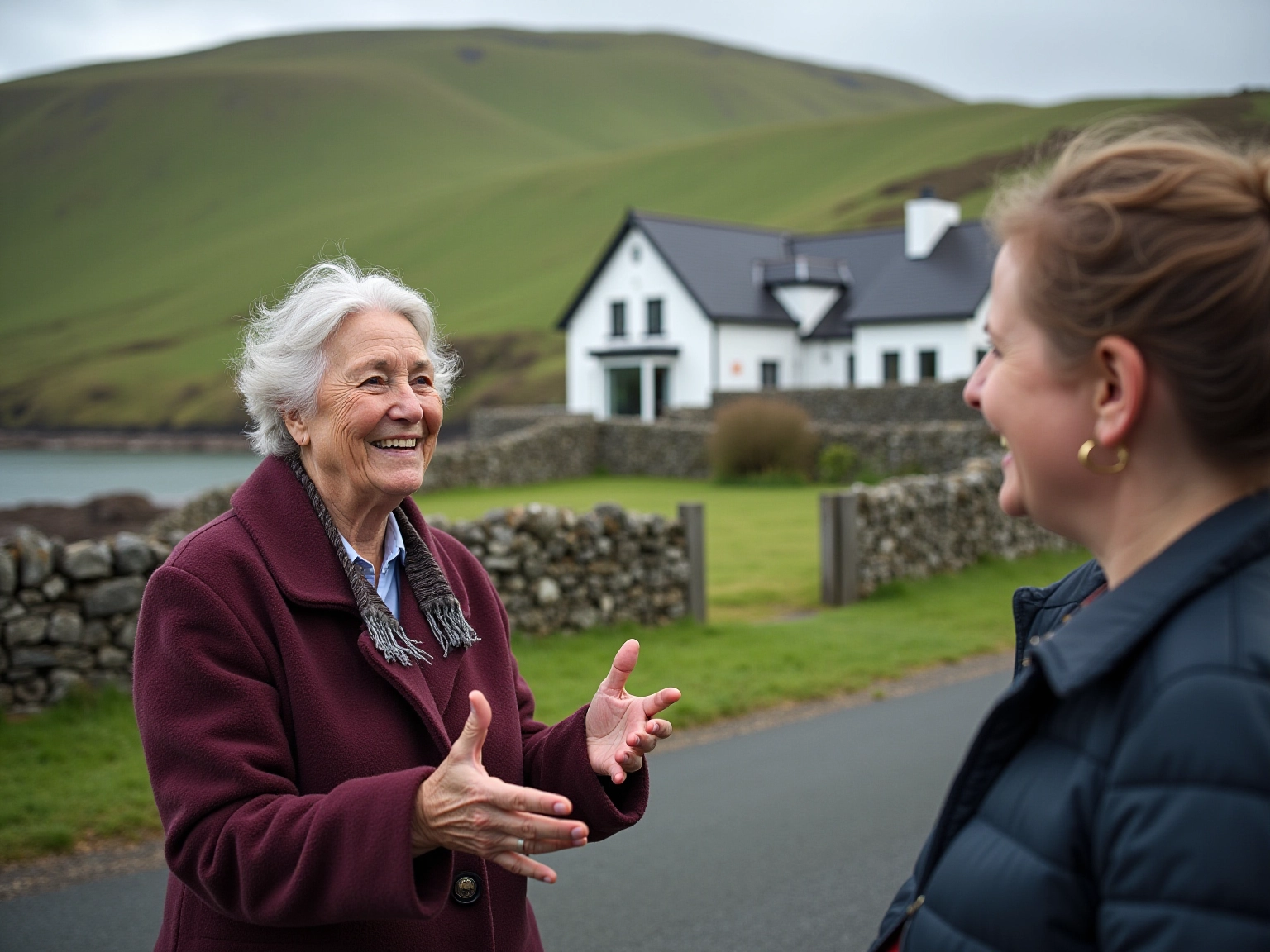
Aran Islands Accent: A Unique Island Heritage
The dialect of the Aran Islands is an enchanting glimpse into the area’s rich heritage, deeply intertwined with the Gaelic language. Many locals are bilingual, effortlessly switching between Irish and English, which adds a special charm to the dialect. You’ll notice phonetic features unique to the islands, a result of their geographical isolation, allowing traditional linguistic elements to flourish.
This preservation of language not only showcases the islands’ vibrant history but also serves as a vital link to their identity. Plus, the distinct geography of the Aran Islands has attracted adventure sports enthusiasts, diversifying tourism and drawing in new visitors. This influx further influences the local culture and dialect.
Did you know that historical population data shows a peak of 3,521 residents in 1841, with a recorded population of 1,347 in 2022? It’s fascinating to think about how these demographic changes may have shaped the linguistic features over time. As J.M. Synge poignantly observed, “And indeed it is many get their death that way on the island,” highlighting the deep connection between the dialect and the community’s stories.
So, the Aran Islands dialect isn’t just a way of speaking; it’s a captivating subject for linguistic exploration, reflecting both cultural preservation and the dynamic nature of its heritage. Isn’t that something worth discovering on your next adventure?
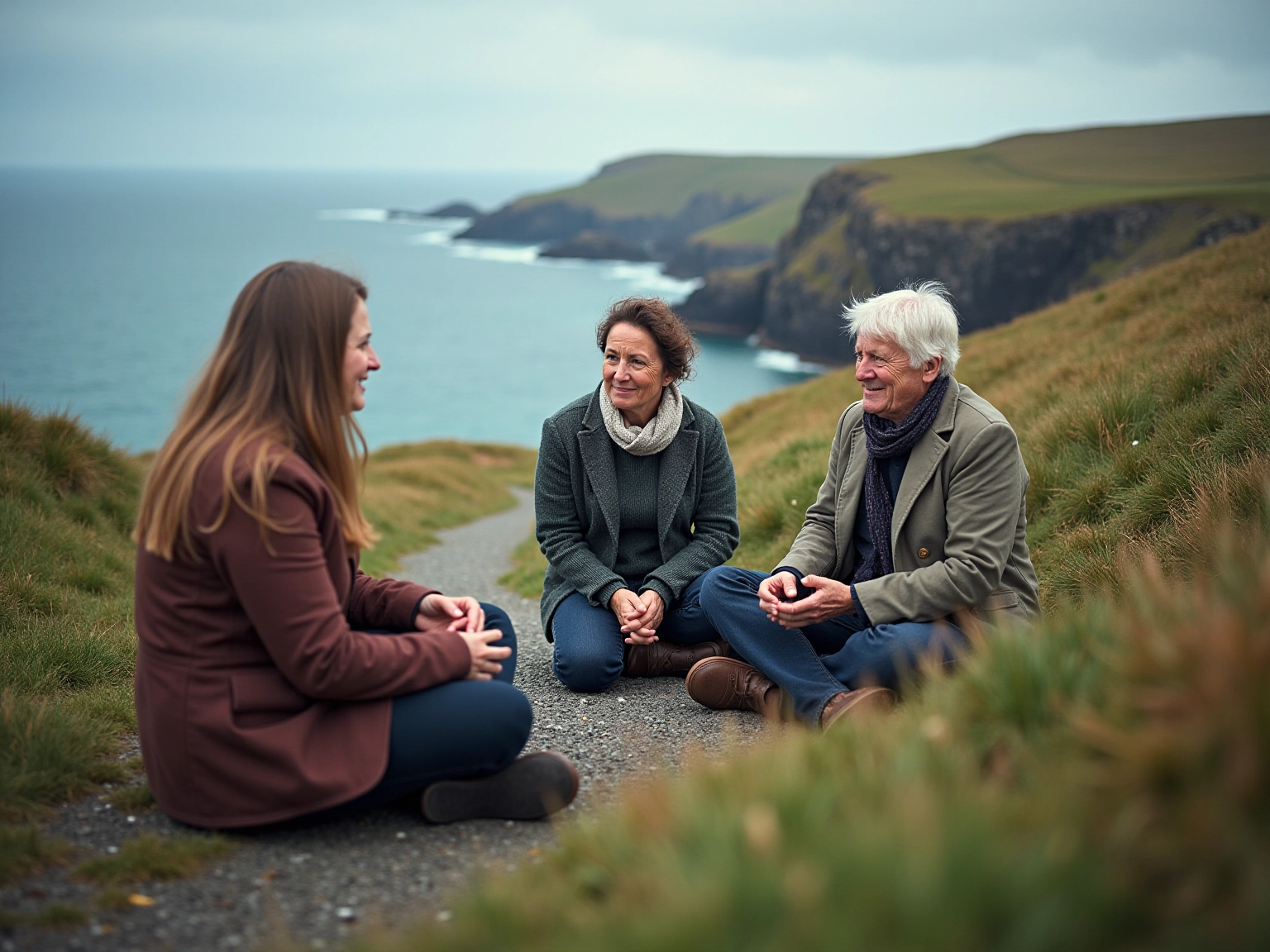
Irish Accents in America: The Legacy of Immigration
The dialects from Ireland have had a remarkable impact on American English, especially in vibrant cities like Boston and New York, where there are significant immigrant communities from Ireland. The unique lilt and pronunciation patterns of Irish immigrants have blended beautifully with regional dialects, resulting in a distinct American speech that reflects their rich heritage. This fascinating linguistic evolution is evident in the Northern Cities Vowel Shift, which has altered vowel pronunciation in cities such as Chicago and Detroit, influenced by Irish immigration. It’s amazing to see how the fusion of Gaelic and other linguistic elements contributes to the diverse tapestry of American speech, showcasing the lively nature of language as it evolves through social interactions.
But the influence of Gaelic migration goes beyond mere speech patterns; it plays a crucial role in shaping identity across the United States. Take the expression ‘to chance your arm,’ for instance, which originated in Ireland and has found its way into various American regions. This illustrates the lasting impact of Hibernian vernacular. Customer testimonials reveal that delving into these accents and their histories can truly enhance your travel experience. Readers have noted that understanding the stories behind the accents allows them to connect more deeply with the narratives of their destinations. One traveler shared that learning about the Gaelic community’s influence on local speech transformed their trip to Boston into a more meaningful adventure.
As the linguistic heritage of Irish settlers continues to thrive, it stands as a testament to the broader effects of immigration on American identity. The diverse ways Americans communicate today highlight this rich heritage, emphasizing the importance of recognizing and appreciating the cultural contributions of Irish immigrants to the American landscape. As the IrishCentral Staff noted, ‘the linguistic legacy of Irish settlers endures in the diverse ways Americans speak today, serving as a testament to the enduring impact of immigration on the nation’s identity.
Conclusion
Irish accents aren’t just variations in speech; they embody a rich cultural tapestry that reflects the history, geography, and social identity of the Irish people. Each accent—from the melodic Cork accent to the distinctive Belfast intonation—tells unique stories about their regions, inviting you to forge deeper connections with the local culture. These accents serve as gateways to understanding the vibrant narratives that define Ireland, showcasing the intricate interplay between language and cultural identity.
As we explore this fascinating topic, you’ll find that the significance of accents extends beyond mere phonetics; they are integral to the storytelling tradition that shapes the Irish experience. The evolution of accents, like the dynamic features of the Dublin accent or the musicality of the Kerry accent, illustrates how social identity and historical influences mold local speech patterns. This cultural richness not only enhances your travel experience but also fosters a sense of connection and belonging among locals and visitors alike.
Ultimately, embracing the diversity of Irish accents enriches your exploration of this enchanting land. By engaging with the sounds and stories of different regions, you can unlock a deeper appreciation for the cultural heritage that makes Ireland unique. Whether through the lyrical tones of the Galway accent or the distinctive voice of the Aran Islands, each accent offers a glimpse into the heart of Ireland, ensuring that every journey is not just a visit, but a meaningful encounter with its enduring spirit.
Frequently Asked Questions
What are Celtic dialects and their significance?
Celtic dialects are variations in language that reflect the history, geography, and social identity of the people in Ireland. They offer a unique insight into local culture and enhance travelers’ connections to the region.
How do Irish accents contribute to cultural identity?
Irish accents showcase regional differences and social contexts, highlighting unique expressions and idioms that resonate with Ireland’s rich history. They play a significant role in shaping the identity of English speakers from Ireland.
What is the role of dialects in storytelling within Irish culture?
Dialects are essential to the storytelling tradition that defines the Irish experience, allowing for a deeper engagement with local narratives and the cultural tapestry of Ireland.
How can visitors enhance their experience with Irish dialects?
Visitors can enhance their experiences by practicing listening to and imitating local pronunciations, which helps build relationships with residents and fosters a deeper understanding of the culture.
What characterizes the Dublin dialect?
The Dublin dialect features lively intonation and quick speech, with distinct variations across neighborhoods. For example, North Dubliners may pronounce ‘th’ as ‘t’, turning ‘Thursday’ into ‘Tursday’.
How has the Dublin dialect evolved over time?
The Dublin dialect has evolved with the emergence of Dublin 4 English in the late 20th century, initially adopted by the middle and upper classes to convey sophistication. This has influenced broader Dublin English, reflecting a complex historical narrative.
Who are some notable figures associated with the Dublin dialect?
Prominent figures like Damien Dempsey and Conor McGregor embody the unique tones of Dublin English, enhancing their personal identities and strengthening connections among locals.
What makes the Northern dialect of Ireland unique?
The Northern dialect is known for its musical nature and distinct lilt, with vowel sounds and intonation patterns rooted in both Gaelic and English traditions, showcasing the area’s rich cultural heritage.
How can one experience the Northern dialect firsthand?
Visitors can experience the Northern dialect by immersing themselves in the local music scene, particularly in renowned pubs in Derry and Belfast, where live shows emphasize the dialect’s melodic quality.
What does the Northern dialect represent in terms of cultural narratives?
The Northern dialect serves as a living testament to the area’s artistic spirit and cultural narratives, enhancing visitors’ understanding of Irish cultural diversity and authenticity.









